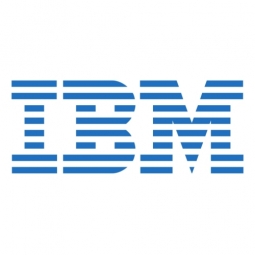Customer Company Size
Large Corporate
Region
- America
Country
- United States
Product
- IBM WebSphere Application Server
- IBM WebSphere eXtreme Scale
- IBM WebSphere DataPower Integration Appliance X150
- IBM WebSphere Message Broker
- IBM WebSphere MQ
- IBM Rational Application Developer
- IBM Rational AppScan
- IBM Rational ClearCase
Tech Stack
- HTML5
- XML
- Android
- iOS
- Windows Mobile
Implementation Scale
- Enterprise-wide Deployment
Impact Metrics
- Cost Savings
- Customer Satisfaction
- Productivity Improvements
Technology Category
- Application Infrastructure & Middleware - API Integration & Management
- Application Infrastructure & Middleware - Data Exchange & Integration
- Application Infrastructure & Middleware - Middleware, SDKs & Libraries
Applicable Industries
- Telecommunications
Applicable Functions
- Sales & Marketing
- Business Operation
Use Cases
- Remote Asset Management
- Predictive Maintenance
- Process Control & Optimization
- Real-Time Location System (RTLS)
Services
- Software Design & Engineering Services
- System Integration
About The Customer
The customer is a leading voice and data services provider based in the United States. The company employs approximately 80,000 people and offers global voice and data services in more than 200 destinations around the world. The company is committed to improving the service it offers its customers while enhancing efficiency, cutting costs, and empowering its employees with the latest technology. The company began providing self-service options in 2000 to better serve its customers. With the advent of smartphones, the company created a rich client application for the Android and Apple iOS platforms.
The Challenge
The voice and data services provider aimed to improve its services while enhancing efficiency, reducing costs, and empowering its employees with the latest technology. The company began providing self-service options in 2000 to better serve its customers. However, with the advent of smartphones, the company faced the challenge of staying on top of changing technologies and evolving customer needs. The company needed to update its application correspondingly with the frequent updates of the Apple iOS and Android operating systems. Additionally, the company had to accommodate growing numbers of customer self-service transactions and increasing amounts of data. The company also sought to empower its employees by enabling them to work on the device of their choice.
The Solution
The company partnered with IBM to create a mobile application platform that would enable it to respond quickly to meet its customers’ needs while supporting growing volumes of data. The mobile application platform consists of three primary components: consumer applications, commerce applications, and enterprise mobility. The company used IBM WebSphere software to create a hybrid enterprise service bus (ESB) solution. IBM WebSphere Message Broker software is the core of the ESB, integrating several packaged and custom applications within the enterprise. The company used IBM WebSphere eXtreme Scale software to enable scaling to handle increased volumes of transactions. The company also implemented IBM WebSphere Application Server software to serve the platform for all mobile application development, and IBM Rational software to support development.
Operational Impact
Quantitative Benefit

Case Study missing?
Start adding your own!
Register with your work email and create a new case study profile for your business.
Related Case Studies.

Case Study
Vodafone Hosted On AWS
Vodafone found that traffic for the applications peak during the four-month period when the international cricket season is at its height in Australia. During the 2011/2012 cricket season, 700,000 consumers downloaded the Cricket Live Australia application. Vodafone needed to be able to meet customer demand, but didn’t want to invest in additional resources that would be underutilized during cricket’s off-season.

Case Study
SKT, Construction of Smart Office Environment
SK T-Tower is the headquarters of SK Telecom. Inside the building, different types of mobile devices, such as laptops, smartphones and tablets, are in use, and with the increase in WLAN traffic and the use of quality multimedia data, the volume of wireless data sees an explosive growth. Users want limitless Internet access in various places in addition to designated areas.







